CMV Retinitis – February 2021

History
A 36-year-old African-American man presented to clinic with complaints of worsening blurry vision and progressive field loss in his left eye. He also mentioned recently worsening flashes and floaters. He had no eye pain, no redness, no trauma, and no ocular history. One month prior to presentation, he presented to his primary care physician with worsening headaches and dizziness and was found to have HIV. He had recently been started on Biktarvy, ethambutol, and Bactrim. Review of systems was positive for headaches, weakness, and fatigue, but negative for chest pain, dyspnea, nausea, vomiting, diarrhea, constipation, or any rashes. He denied smoking, alcohol use, or illicit drug use.
Exam
Vision was 20/20 in the right eye and 20/30 in the left eye, respectively. IOP was 12 and 18. Confrontation visual fields were full bilaterally. Anterior exam of the left eye was remarkable for dense, fine keratic precipitates along the endothelium and 2+ anterior chamber cell. The right eye was normal.
Evaluation of his posterior segment demonstrated trace vitreous cell in his left eye. Below are his fundus photos:
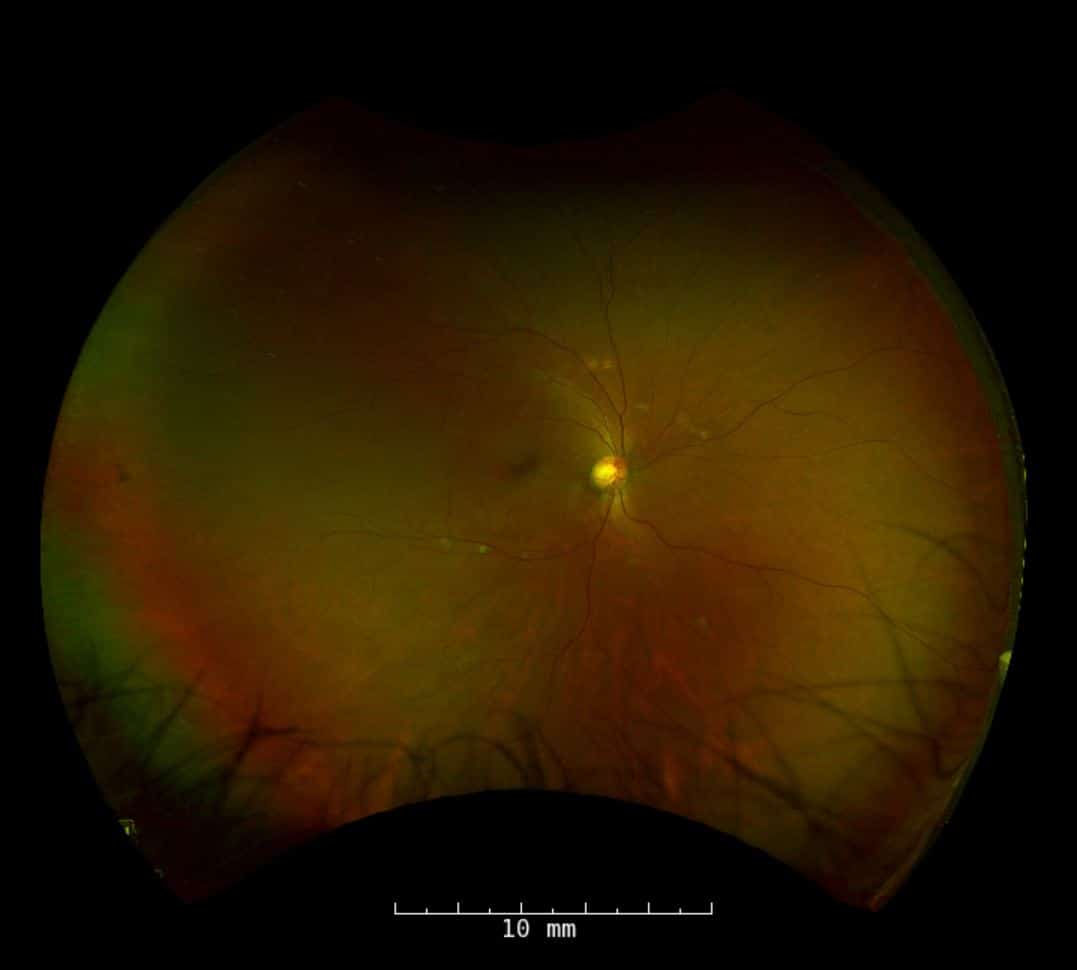
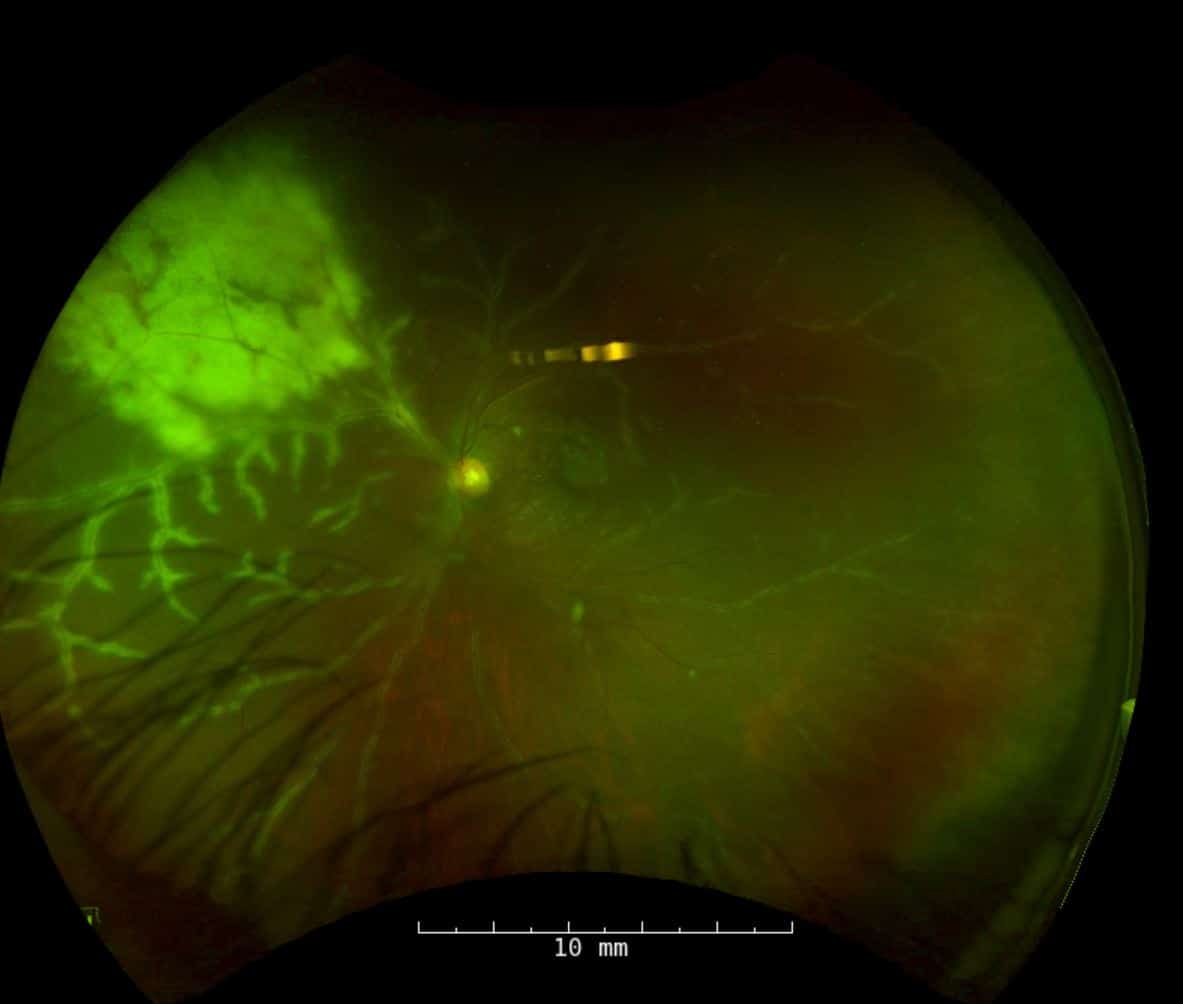
Fundus Photos: Both eyes show normal optic nerves with 0.3 C:D ratios. The right eye demonstrated a few scattered cotton wool spots along the arcades. His left eye showed significant perivascular sheathing, especially noted nasally. There was also an area of retinal whitening with overlying hyperpigmented patches superonasally.
Based on his abnormal findings on fundus exam, further imaging was completed. OCT and fluorescein angiography of both eyes are below.
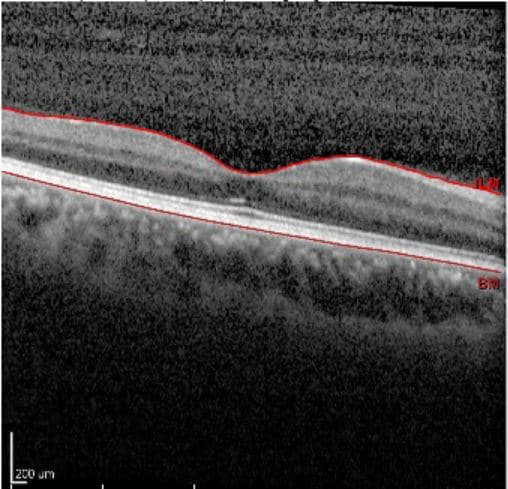
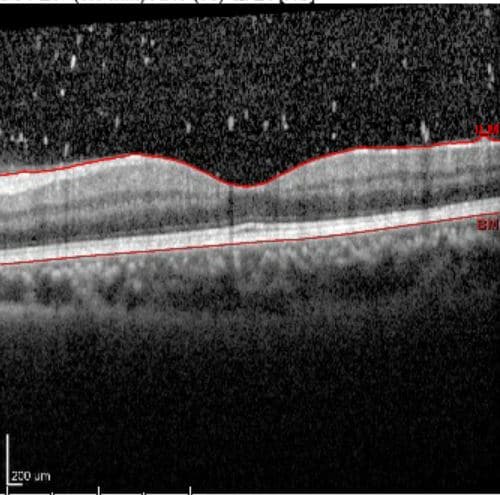
OCT OU: The right eye showed a small central hyperreflective area in the outer retina. Left eye showed vitreous debris with superonasal retinal thickening. There was no subretinal fluid noted in either eye.
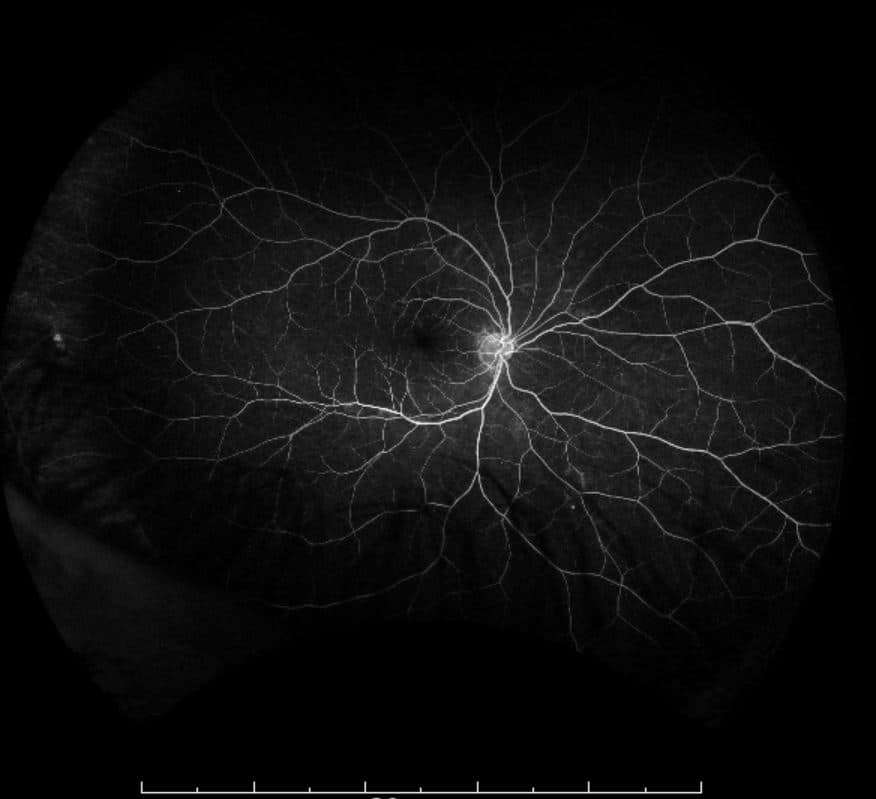
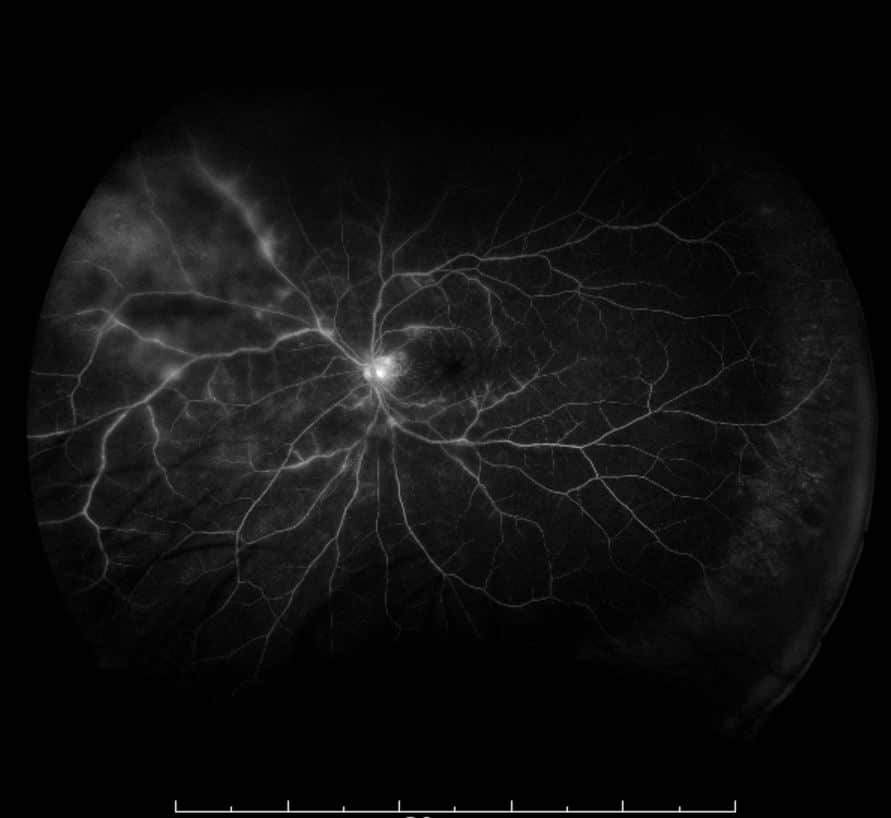
Fluorescein Angiography OU: The left eye demonstrated diffuse late-stage leakage along the vessels with an area of blockage noted superonasally. The right eye was unremarkable.
Differential Diagnosis:
- CMV Retinitis
- Progressive Outer Retinal Necrosis (PORN)
- Immune Recovery Uveitis
- HIV Retinopathy
Discussion:
Diagnosis – CMV Retinitis
CMV Retinitis is a viral disease seen in immunocompromised patients, most commonly thought of as an AIDS-related opportunistic infection. It can often lead to blindness with complications such as retinal necrosis, retinal breaks, and retinal detachments. CMV is spread to the retina through a hematogenous route due to impaired CD4 cell function. Prior to improvements in HIV and AIDS management, CMV retinitis was much more common, but incidence has decreased significantly with the advent of HAART.
Patients often present with decreased vision and floaters, but it is common to also have patients complain of flashes and field loss due to severe sickness of the retina. Diagnosis is mainly based on clinical exam with posterior pole changes most often seen. Vitritis is not typical, but a mild vitreous reaction can occur. The findings can be seen in different forms with either hemorrhagic necrosis centered around vasculature or what is classically described as “frosted-branch angiitis” involving both veins and arteries with severe involvement leading to retinal scarring and atrophy. Peripheral involvement often shows retinal granularity.
Although not required, testing can help aid in diagnosis. Aqueous or vitreous tap with PCR analysis for CMV can help confirm suspicion. Once diagnosed, it is crucial to co-manage the condition with the patient’s primary care team as well as infectious disease specialists as most care is handled by systemic medication. Oral or IV antivirals such as valganciclovir or ganciclovir are often used, but this is best handled by the appropriate specialists as continuous monitoring for side effects and improvement is needed. It must be noted that if the patient does not have a known history of HIV/AIDS, they should be immediately referred for a full evaluation and work-up.
Our patient has done well since diagnosis. Aqueous PCR was positive for CMV and he was started on oral valganciclovir for systemic control as well as prednisolone eye drops and cyclopentolate due to the anterior chamber inflammation. His retina has showed progressively decreasing vasculitis as well consolidation and pigmentation of the retinal whitening with no signs of worsening disease.
If you are looking to schedule your first consultation, please contact us today by clicking HERE and find the location that is nearest you!
References:
- Avery, R.K. Update in management of ganciclovir- resistant cytomegalovirus infection. Curr. Opin. Infect. Dis. 21:433–437, 2008.
- Ho M, Invernizzi A, Zagora S, et al. Presenting Features, Treatment and Clinical Outcomes of Cytomegalovirus Retinitis: Non-HIV Patients Vs HIV Patients. OcularImmunology and Inflammation. 2019;29:535-542.
- Jabs, D.A., et al. Cytomegalovirus resistance to ganciclovir and clinical outcomes of patients with cytomegalovirus retinitis. Am. J. Ophthalmol. 2003;135:26–34.
- Jacobson MA. Treatment of AIDS-related cytomegalovirus retinitis. In: UpToDate, Bartlett JG and Mitty J (Ed), UpToDate, Waltham, MA
- Wills Eye Manual. Sixth Edition. Section 12.9: Cytomegalovirus Retinitis. Philadelphia, PA: Lippincott Williams & Wilkins; 2012.

